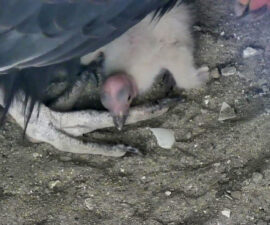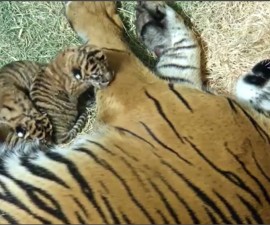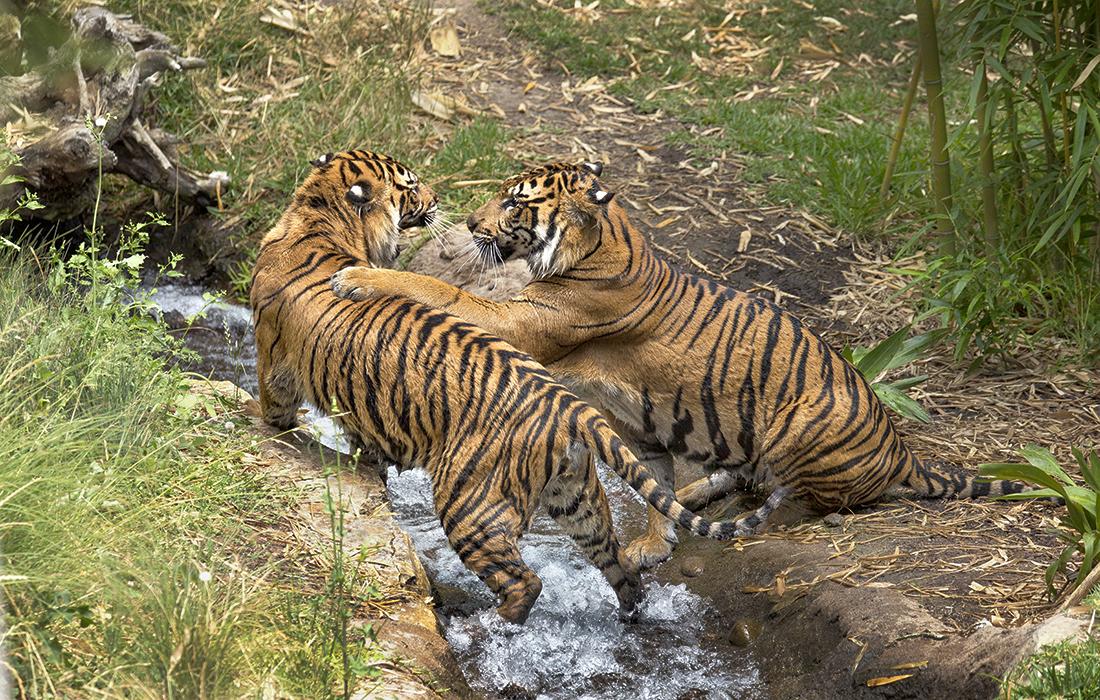
Sibling Revelry
Every day is a new adventure for playful “best buds” Suka and Nelson, Sumatran tiger brothers from different litters.
BY Eston Ellis
Photography by Tammy Spratt
Frisky young Sumatran tiger brothers Suka and Nelson, born four months apart at the San Diego Zoo Safari Park, are growing up—and these not-quite two-year-olds have become nearly inseparable buddies. They began living together in April 2017, at Tull Family Tiger Trail. In the wild, young tiger siblings of the same sex often form coalitions after separating from their mother—usually between 17 and 36 months of age. They form these coalitions to support each other, and cooperatively hunt and defend their territories. In wild habitats, these coalitions typically last only until the brothers or sisters reach sexual maturity. However, in zoos, these relationships sometimes continue into adulthood.
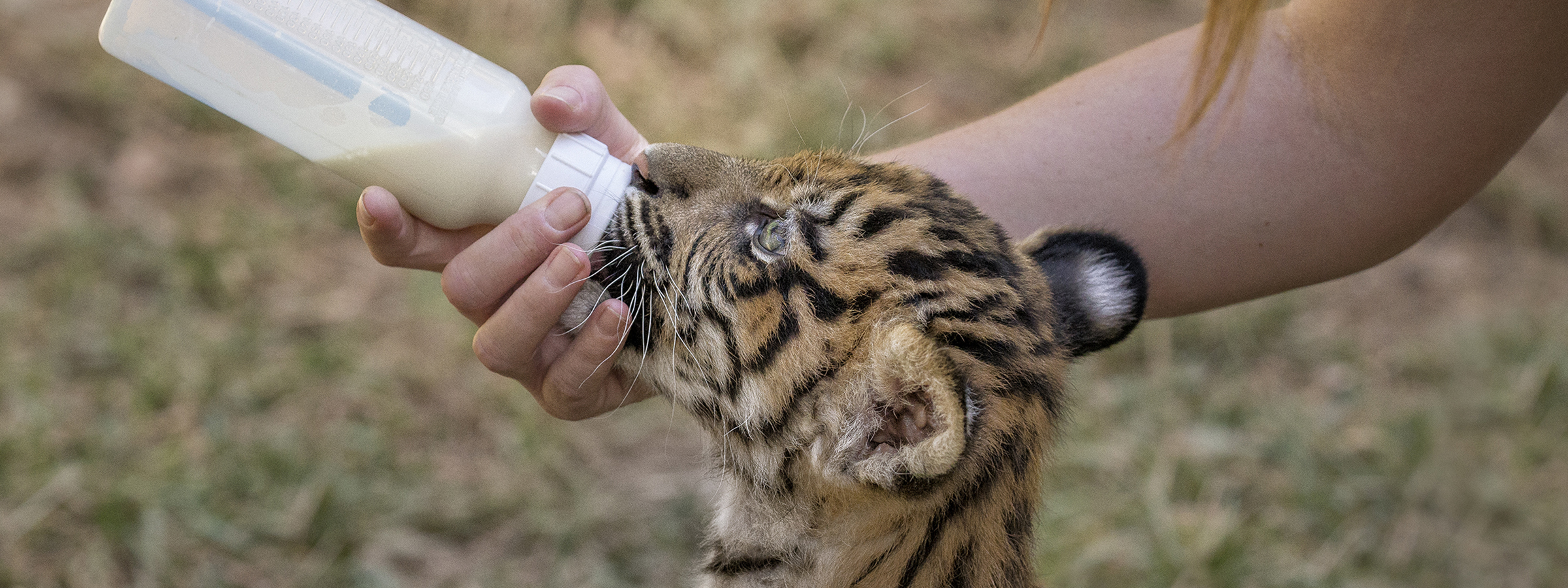
A Coalition of Two
Suka and Nelson have an unusual relationship, by any definition. They have the same parents, but they are “brothers from another litter.” Suka was born as a single cub on September 14, 2015 to first-time parents Joanne and Teddy. He was born with severe kidney and urinary tract infections and was rejected by Joanne when he was five days old. Park keepers hand raised him and Park vets nursed him back to health, but he had to learn about tiger behaviors from a distance, by watching the other tigers in Tiger Trail.
Joanne gave birth to another litter—cubs Nelson, Cathy, and Debbie—on January 28, 2016. Joanne proved to be a good mom the second time around and successfully raised these healthy cubs. But once Nelson was about nine months old, she began pushing him away, trying to get him to start living on his own.
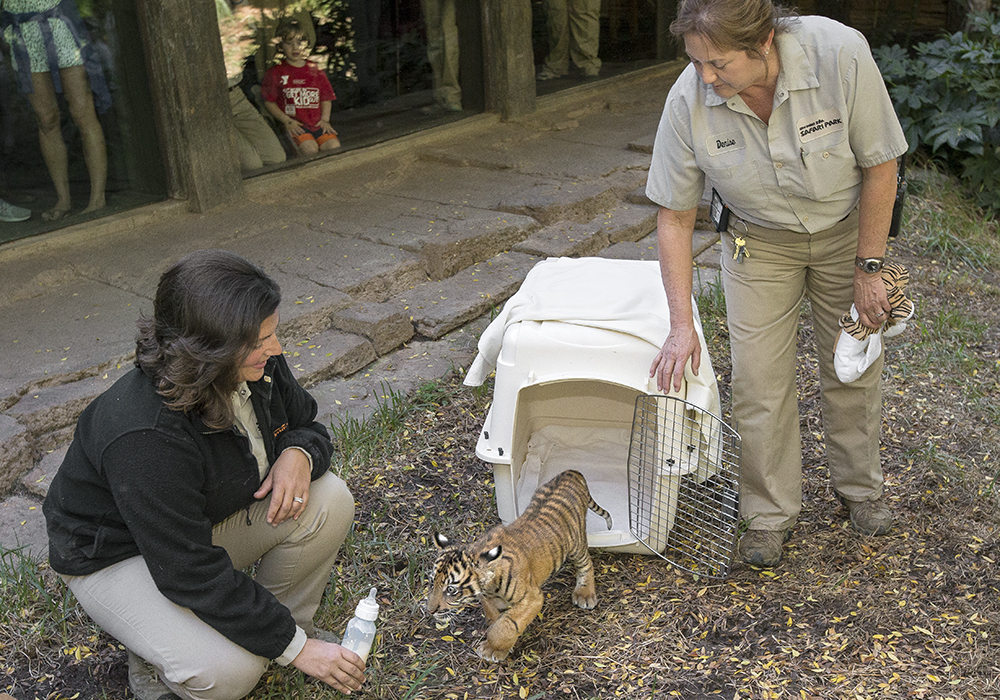
SOCIALIZING SUKA
Suka, who was hand raised at the Safari Park, is now learning important tiger social skills from his mom-raised brother.
That gave animal care staff an idea: maybe Suka and Nelson would both benefit from a “faux coalition” relationship. Sumatran tigers are critically endangered, and fewer than 400 still exist in their native habitat. To create a safeguard for this dwindling wild population, the Safari Park and other North American zoos participate in a Species Survival Plan (SSP) breeding program. “Suka was hand raised and didn’t have the opportunity to grow up with siblings—but if he’s going to be a part of an SSP breeding program in the future, or perhaps go out to another facility someday, he needs to know how to interact with other tigers,” said Autumn Nelson, animal care supervisor.
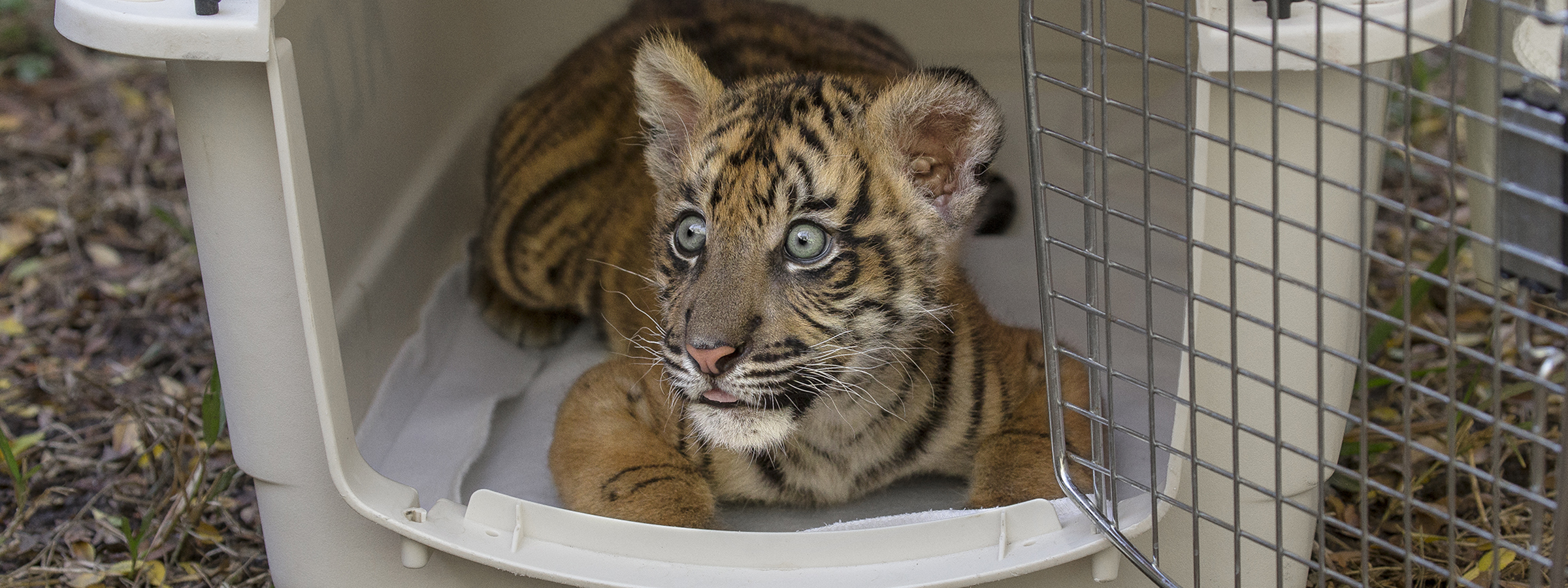
 Sumatran tigers still exist in their native habitat
Sumatran tigers still exist in their native habitat
Boy Howdy
The tiger brothers’ first interactions were through a mesh “howdy gate” that allowed them to safely see, smell, and communicate with each other from adjacent bedrooms, without full contact. The howdy interactions began with Joanne and all of the cubs joining in. Later, Suka and Nelson participated in a few months of one-on-one howdy sessions, some lasting for an entire day.
Their first “play date” fully together was on January 9, 2017, inside the tiger house and supervised by the keepers. “The boys got along quite well—they chuffed [a friendly vocalization] continuously and tried to play with one another,” recalled keeper Elise Montanino. “Both Suka and Nelson took turns stalking each other and initiating playful sneak attacks.” Despite the fact that Suka was slightly older and outweighed Nelson by 60 pounds, during the several play dates that followed, Nelson soon asserted his dominance as the alpha tiger.
“At first, Suka was like a big rambunctious Labrador retriever, and Nelson was more reserved,” Autumn said. “Eventually, Suka learned to read Nelson’s body language and vocalizations. Nelson was very patient with Suka. He would get prodded several times as Suka would test his boundaries, until Nelson would go into ‘big tiger mode’ and give him a clear sign that he should back off.”
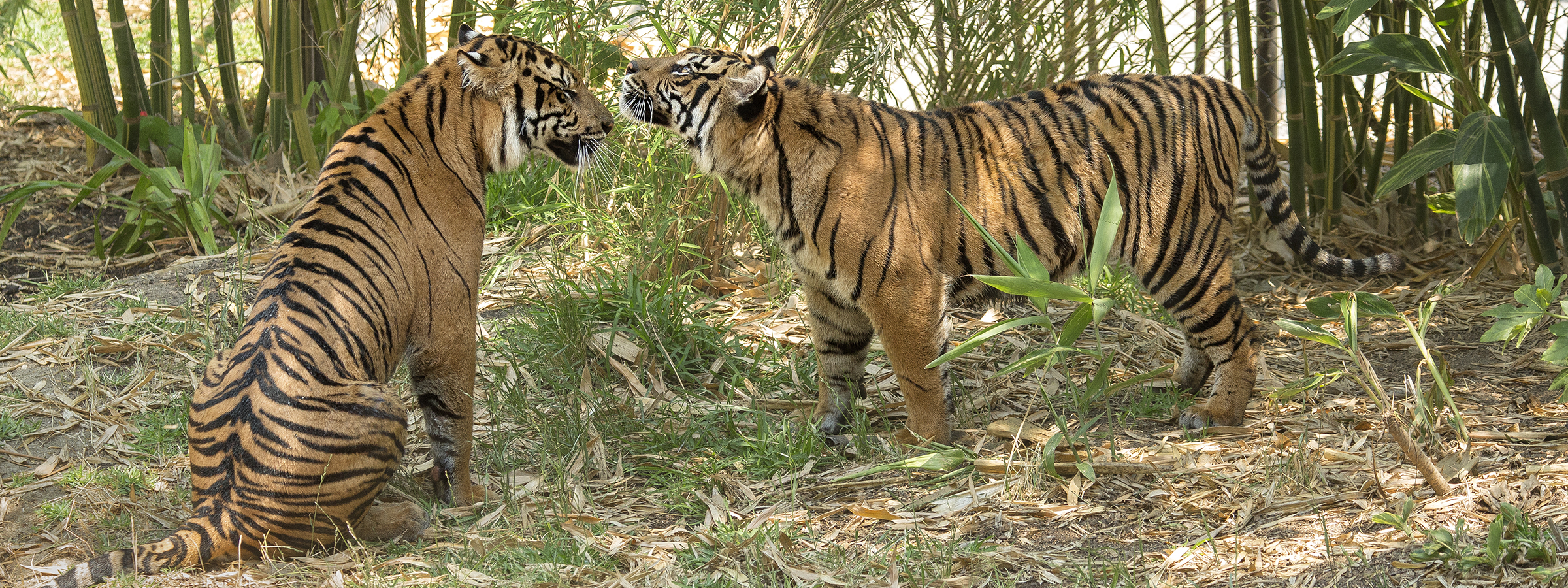
 Sumatran tigers live at the San Diego Zoo Safari Park
Sumatran tigers live at the San Diego Zoo Safari Park
Graduation Time
“We gave them time to bond in an appropriate setting,” Autumn explained. “Suka had not had physical contact with another tiger since he was five days old, and Nelson had never been around another boy tiger. Every day, we kept seeing progress, as they would play together, lie near each other, chase each other, and play with their toys.”
On February 6, the brothers went on exhibit together at Tiger Trail for the first time. It would mark the first of many high-speed games of tag and beef heart scavenger hunts as their friendship blossomed, Elise said. The brothers began living together full time on April 18.
Currently, they are only split up when they are given big food items, such as bones and large treats, and when they are fed in the morning. “When they are separated, we use that time for husbandry training,” Elise said. “They are voluntary participants in their own care—they know how to cooperate for blood draws [taken from their tails], get vaccines, present specific body parts, and accept a blood pressure cuff. Early socialization built a foundation of trust between the keepers and cubs, and allowed the cubs’ behavioral repertoires to grow quickly.”
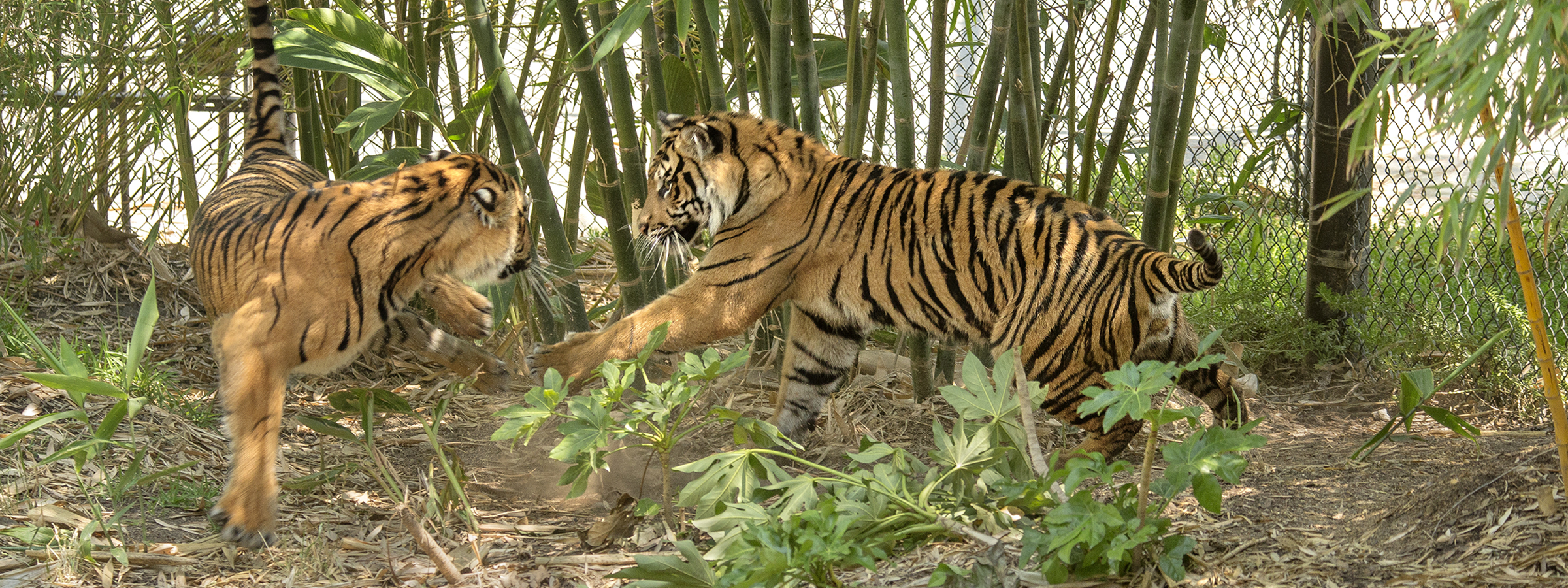
 Sumatran tigers have been born at the Safari Park
Sumatran tigers have been born at the Safari Park
Tales of Two Tigers
Guests who see the brothers at Tiger Trail may notice that on a warm day, Suka loves to jump in the pool and swim, but Nelson only occasionally puts his feet in the water. Whatever the weather is like, they can often be seen chasing each other playfully and sometimes cuddling together. “They are wrestling on a regular basis, and they sleep together in a giant pile,” Autumn said.
Both brothers are playful, and sometimes they play rough. Keepers know the difference between tiger play and aggression, but guests sometimes see playful roughhousing and become concerned, Autumn said. “It can look serious when they have scuffles, when one is asserting dominance, and they’re testing each other—but it’s for show.”
Autumn described Suka as “sweet,” and said he generally gets along very well with his “laid-back” brother. “Nelson is very mellow, like his father Teddy, and he’s one of the most easygoing cats in the house.” Both boys have a range of vocalizations for communicating with each other. “If Nelson is not playing with Suka or he has something Suka wants, Suka gets very whiney and heaves heavy sighs,” Elise said. “Nelson and Suka ‘chuff’ contentedly to one another, but they have developed their ‘big tiger’ voices, and may give a barking roar if they get impatient or possessive of a toy.”
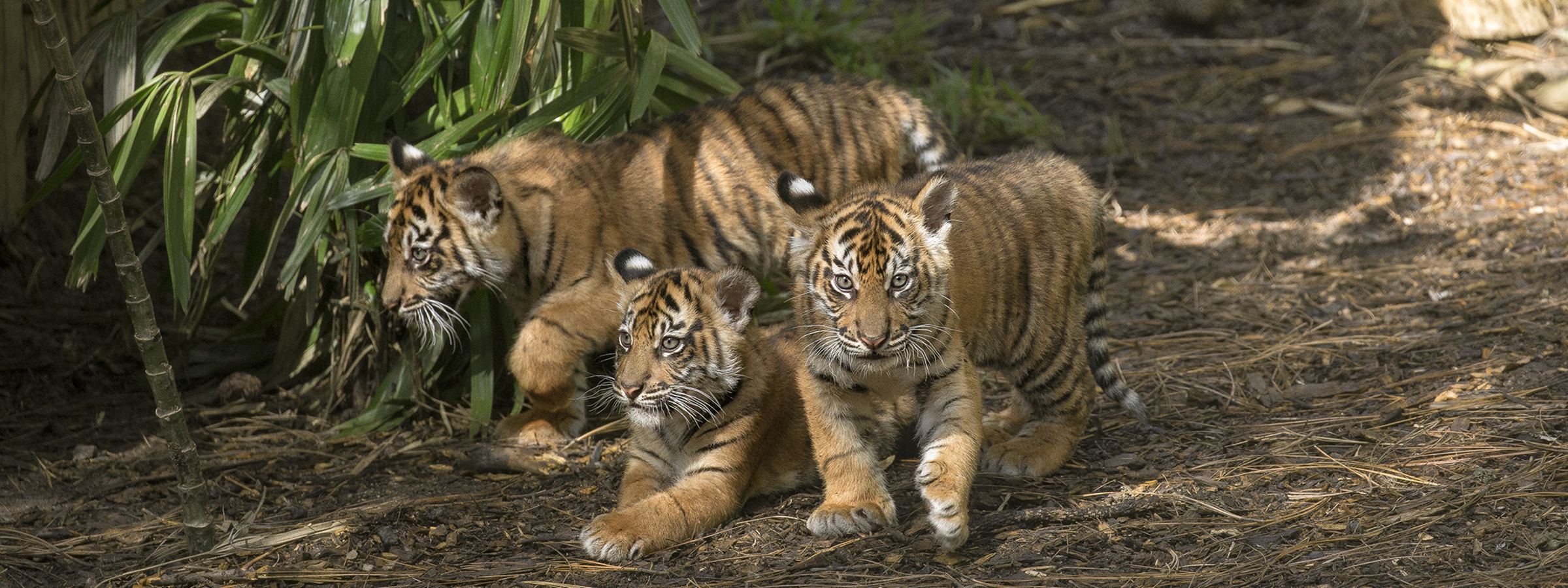
Growing Up
Keepers will be watching how the brothers’ relationship develops, with the big test being whether they become more aggressive when they become sexually mature. “A previous coalition at the Park, Conrad and Thomas, were here until age four, had been around females, and still got along well,” Autumn said. “Those two are still together, at the Kansas City Zoo. If Suka and Nelson are anything like them, we expect they will pick up on the presence of females in the exhibits, but will still get along fine with each other.”
There are currently nine Sumatran tigers at the Safari Park—the largest population of this subspecies in North America. Having a coalition of two bonded males living together not only provides both with companionship, but it also takes maximum advantage of limited tiger bedroom and exhibit space. “Our goal is to provide the best welfare we can for our animals,” Autumn said. “This whole situation is a win-win for everybody. It worked out for the cats, for our guests, and for our keepers.”
Not long after Nelson began living with Suka, Joanne went back to being a solitary female—and her daughters Cathy and Debbie have now formed their own coalition. You can see both of the Park’s juvenile sibling coalitions at Tiger Trail—or watch them online, on our Tiger Cam.

